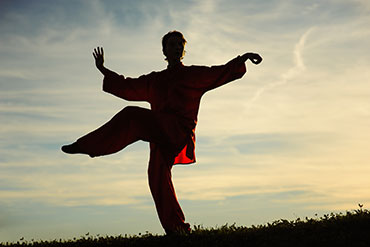 Various martial arts styles have been practiced across cultures worldwide to prepare for battle, learn self-defense, and compete against one another. People have also trained in martial arts for ages for the mental and physical development they provide.
Various martial arts styles have been practiced across cultures worldwide to prepare for battle, learn self-defense, and compete against one another. People have also trained in martial arts for ages for the mental and physical development they provide.
Martial arts have enjoyed a huge boost in popularity in recent years thanks to the fast growth of mixed martial arts. Martial arts studioes are springing up everywhere today, giving most people access to these ancient arts that have been historically reserved for only a few select people.
Martial arts teachers have passed the tradition down from generation to generation, teaching the arts of karate, kung fu, jiu-jitsu, aikido, taekwondo, judo, and others. Although many of these practices include throwing, kicking, and punching, the physical side of these skills is only one element.
There are a number of martial art practices that have been researched in association with improving depression. Although any martial art will most likely help to alleviate the symptoms of depression, the following have received the most attention.
Several studies suggest that martial arts training can be beneficial for mental health, potentially reducing symptoms of anxiety and depression. These benefits may include increased self-esteem, improved emotional regulation, and greater well-being.
Qigong
The ancient Chinese practice of Qigong (pronounced “chee gung”), which involves meditation, breathing exercises, and body movements, can reduce the symptoms of depression. The practice has existed for centuries as a way to cultivate inner strength and relaxation, to ward off disease, and to promote longevity and well-being.
In a study at Hong Kong Polytechnic University, participants who practiced Qigong for 8 weeks experienced improved mood, self-confidence, self-esteem, personal well-being, and physical health compared with those in a newspaper-reading group.
The source of depression in traditional Chinese medicine is generally related to the liver and doing Qigong can help move the liver qi. Pronounced “chee,” qi is the Chinese word used to describe energy.
Taekwondo
Taekwondo, sometimes spelled “Tae Kwon Do,” is a Korean martial art that traces its history back to ancient Korea as far as 50 B.C. Its enduring popularity has resulted in a divergent evolution of the martial art. As with other martial art practices, taekwondo is a combination of combat technique, self-defense, sport, exercise, entertainment, and philosophy.
It has been theorized that Taekwondo enhances self-esteem through the provision of physical activity and group experience, and the teaching of relaxation, concentration, assertiveness, directiveness and honesty in communication.
In an exercise study of 20 male and female college-age students, a single 75-minute Taekwondo session significantly improved mood states associated with depression. Participants experienced a reduction in symptoms of depression, anxiety, and fatigue and an increase in vigor and ability to concentrate.
Tai Chi
Tai Chi, shortened from “Tai chi chuan,” is a martial art that has been practiced in China for centuries. Studies have indicated that Tai Chi can help reduce the incidence of depression and mood disturbances. The benefits of Tai Chi extend beyond those of simply exercising. The combination of exercise, meditation, and breathing all play a role in the relief of depression.
A study at the University of Hong Kong found that regular Tai Chi exercises helped improve mood in a group of older patients with depressive disorders.
In a number of clinical studies, Tai Chi has been particularly effective in improving self-esteem and health-related quality of life in older populations. Because Tai Chi improves balance, it helps to reduce falls in the elderly, something which has been linked to depression. When people over the age of 65 fall and break a hip, many never fully recover and about 15 to 20% die within the year. Approximately 50%
of patients who lived independently before sustaining a hip fracture are unable to regain their independent lifestyle; instead facing ongoing disability and prolonged institutionalization. Tai Chi can reduce the risk of fracture by improving balance. In doing this, it also reduces the risk of depression because many people become afraid to go out and exercise after a fall and subsequently become depressed.
Dr. Randi Fredricks, Ph.D.
Author Bio
Dr. Randi Fredricks is a leading expert in the field of mental health counseling and psychotherapy, with over three decades of experience in both research and practice. She holds a PhD from The Institute of Transpersonal Psychology and has published ground-breaking research on communication, mental health, and complementary and alternative medicine. Dr. Fredricks is a best-selling author of books on the treatment of mental health conditions with complementary and alternative medicine. Her work has been featured in leading academic journals and is recognized worldwide. She currently is actively involved in developing innovative solutions for treating mental health. To learn more about Dr. Fredricks’ work, visit her website: https://drrandifredricks.com
References
Fuller J. R. (1988). Martial arts and psychological health. British Journal of Medical Psychology, 61(4), 317–328. [DOI] [PubMed] [Google Scholar]
Konzak B., Boudreau F. (1984). Martial arts training and mental health: An exercise in self-help. Canada’s Mental Health, 32(4), 2–8.
Milligan K., Cosme R., Miscio M. W., Mintz L., Hamilton L., Cox M., … Phillips M. (2017). Integrating mindfulness into mixed martial arts training to enhance academic, social, and emotional outcomes for at-risk high school students: A qualitative exploration. Contemporary School Psychology, 21(4), 335–346. [Google Scholar]
Nosanchuk T. A., MacNeil M. C. (1989). Examination of the effects of traditional and modern martial arts training on aggressiveness. Aggressive Behavior, 15(2), 153–159.
Laaksonen M. A., Knekt P., Lindfors O. (2013). Psychological predictors of the recovery from mood or anxiety disorder in short-term and long-term psychotherapy during a 3-year follow-up. Psychiatry Research, 208(2), 162–173. [DOI] [PubMed] [Google Scholar]
Liddon L., Kingerlee R., Barry J. A. (2018). Gender differences in preferences for psychological treatment, coping strategies, and triggers to help-seeking. British Journal of Clinical Psychology, 57(1), 42–58.

